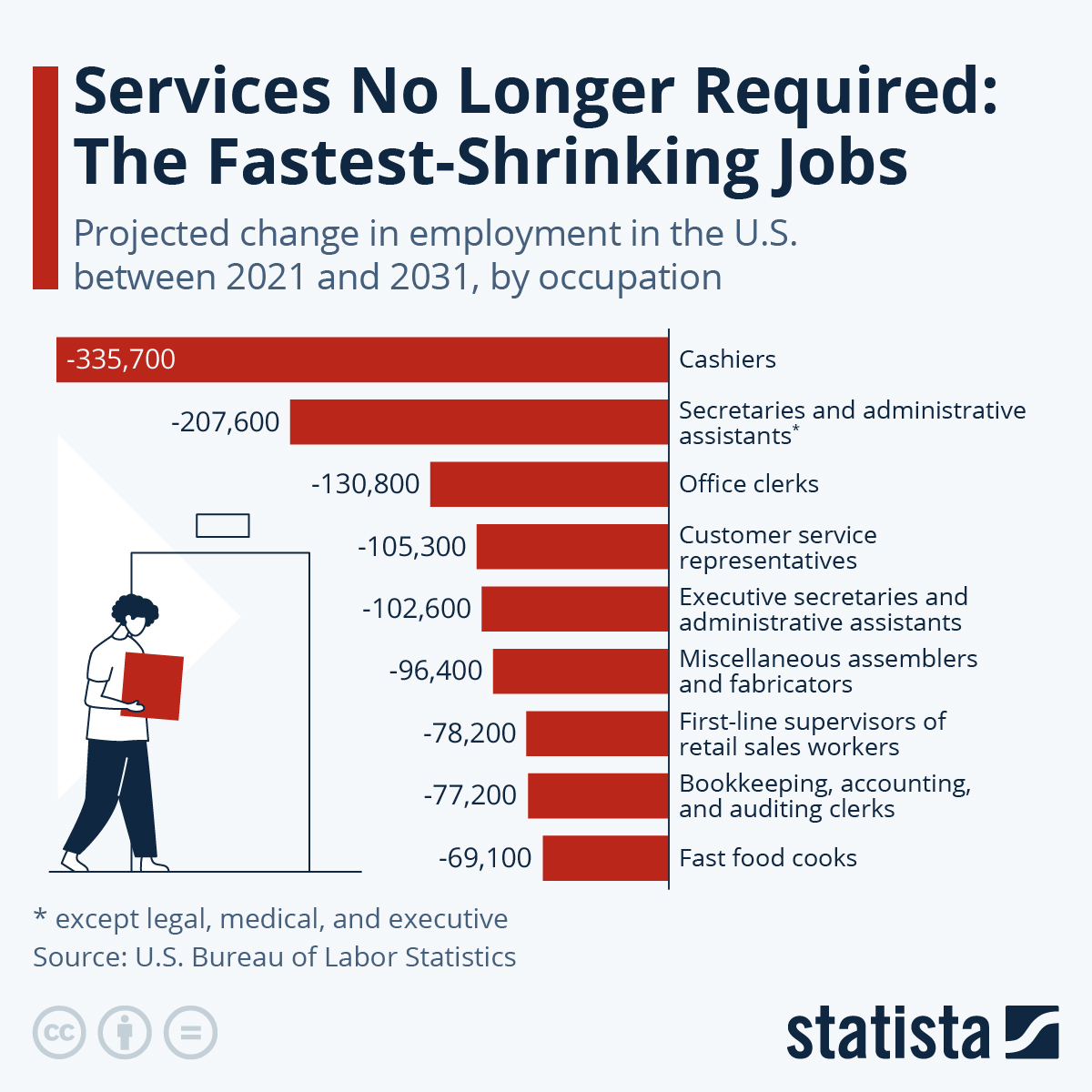
Long before the emergence of ChatGPT and other AI tools threatening to take over our jobs, technological advancements have altered the way people work, making some occupations disappear, while others emerged.
Did you know, for example, that people used to work as living alarm clocks before actual alarm clocks became a thing?
“Knocker uppers”, as they were called, would walk around in industrial England, wielding a long stick with which they’d tap on workers’ doors to wake them in time for their shifts.
There also used to be “computers” long before the arrival of personal computers.
They were persons performing mathematical calculations, a service that is no longer required today.
So which jobs might be next?
As Statista's Felix Richter reports, the U.S. Bureau of Labor Statistics published a report last year, projecting employment levels in 2031 and revealing which jobs are most at risk from automation or other technological and societal shifts.
You will find more infographics at Statista
The BLS identified three occupational groups – office and administrative support occupations, production occupations and sales and related occupations – that are projected to lose jobs over the next decade.
16 of the 20 occupations with the largest expected declines in employment levels by 2031 are from these three groups.
As the chart above shows, cashiers, who are at risk of being replaced by self-checkout, are projected to see the biggest drop in employment, with 335,000 fewer jobs in 2031 than in 2021.
Other jobs high on the list are secretaries, office clerks and customer service representatives, with each of these occupations expected to see employment decline by more than 100,000 jobs until 2031.
When looking at relative employment changes, word processors and typists (-38 percent) and parking enforcement workers (-37 percent) are most at risk of losing their jobs, with other relatively rare occupations (e.g. nuclear power reactor operators) also high on the list.
Long before the emergence of ChatGPT and other AI tools threatening to take over our jobs, technological advancements have altered the way people work, making some occupations disappear, while others emerged.
Did you know, for example, that people used to work as living alarm clocks before actual alarm clocks became a thing?
“Knocker uppers”, as they were called, would walk around in industrial England, wielding a long stick with which they’d tap on workers’ doors to wake them in time for their shifts.
There also used to be “computers” long before the arrival of personal computers.
They were persons performing mathematical calculations, a service that is no longer required today.
So which jobs might be next?
As Statista’s Felix Richter reports, the U.S. Bureau of Labor Statistics published a report last year, projecting employment levels in 2031 and revealing which jobs are most at risk from automation or other technological and societal shifts.
You will find more infographics at Statista
The BLS identified three occupational groups – office and administrative support occupations, production occupations and sales and related occupations – that are projected to lose jobs over the next decade.
16 of the 20 occupations with the largest expected declines in employment levels by 2031 are from these three groups.
As the chart above shows, cashiers, who are at risk of being replaced by self-checkout, are projected to see the biggest drop in employment, with 335,000 fewer jobs in 2031 than in 2021.
Other jobs high on the list are secretaries, office clerks and customer service representatives, with each of these occupations expected to see employment decline by more than 100,000 jobs until 2031.
When looking at relative employment changes, word processors and typists (-38 percent) and parking enforcement workers (-37 percent) are most at risk of losing their jobs, with other relatively rare occupations (e.g. nuclear power reactor operators) also high on the list.
Loading…






